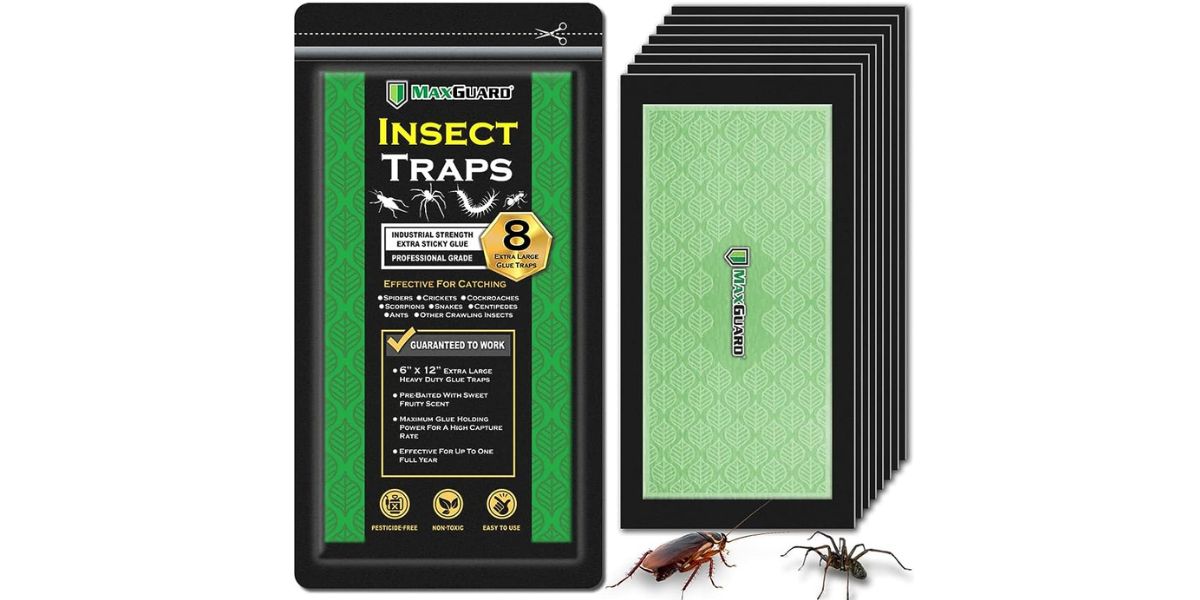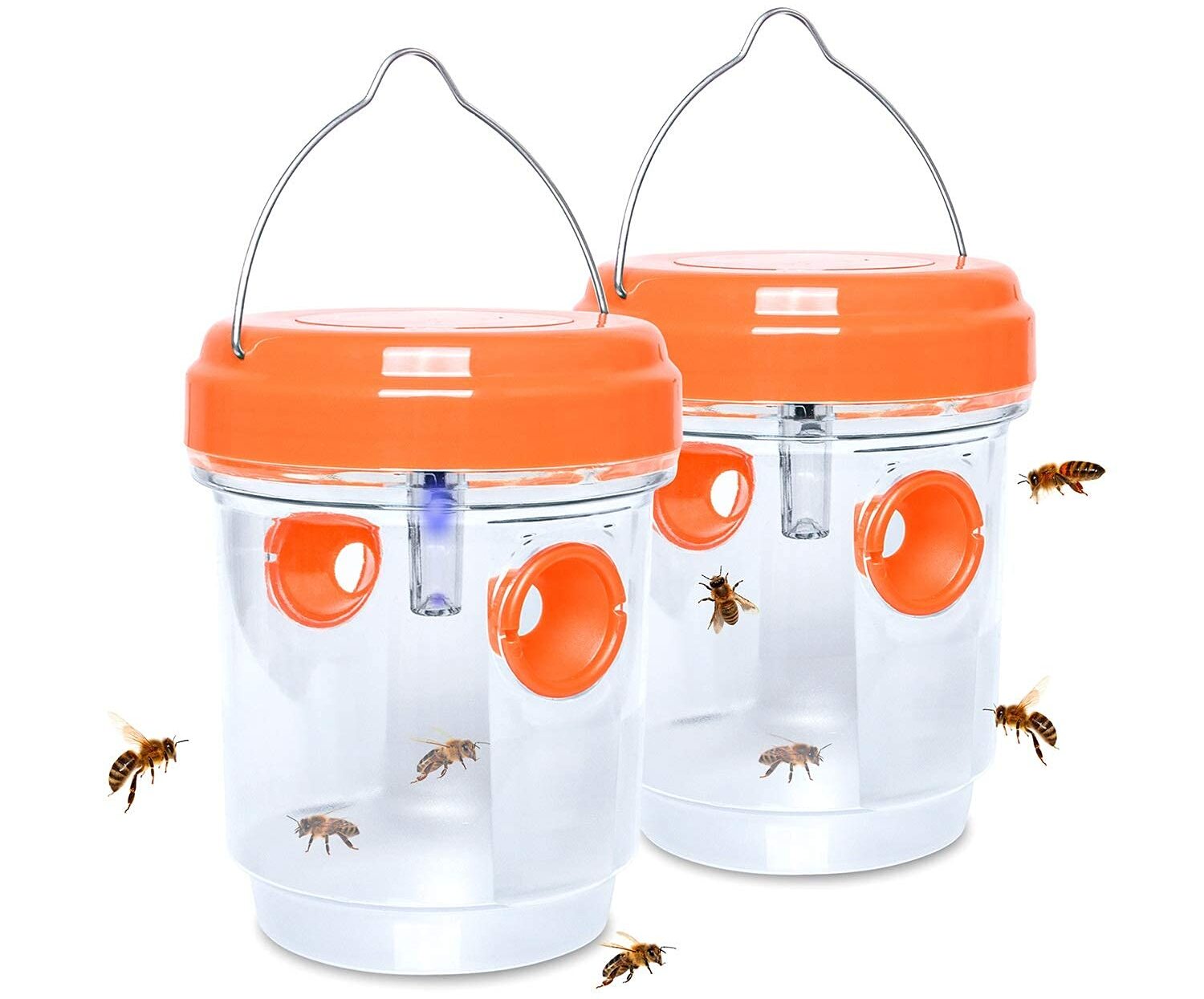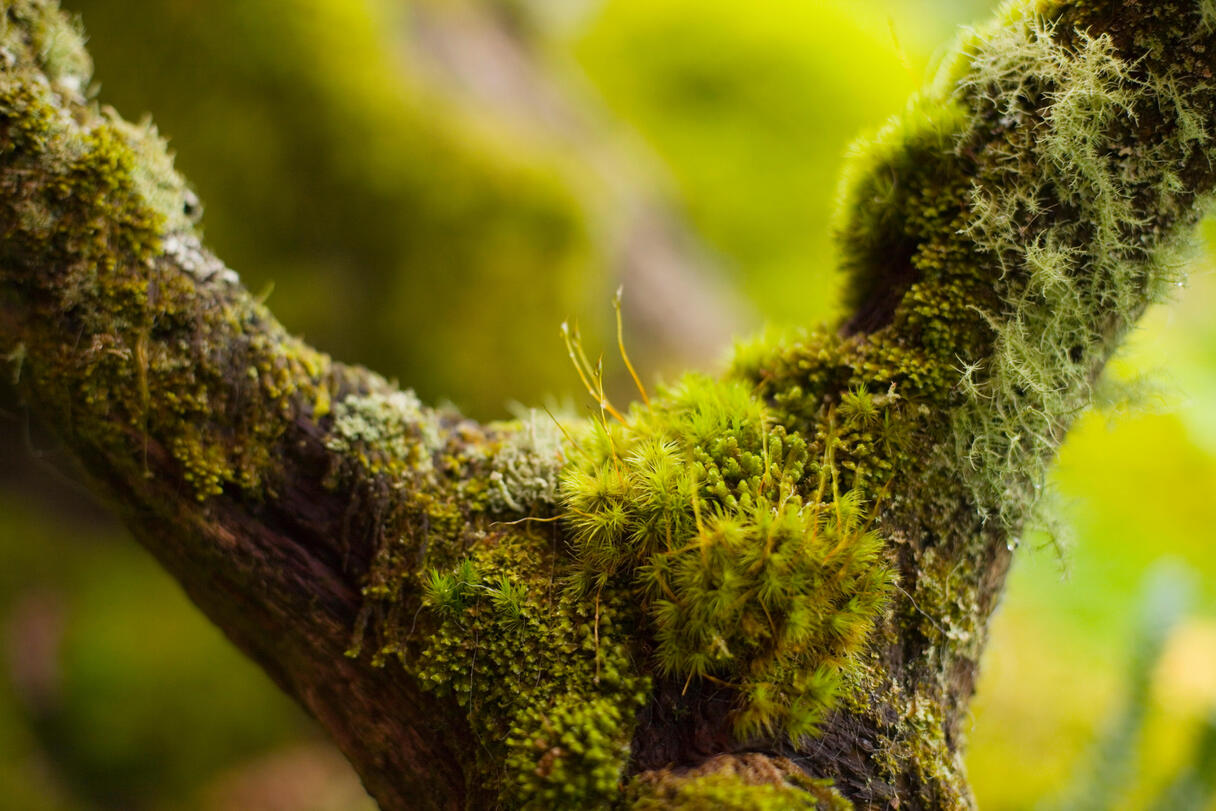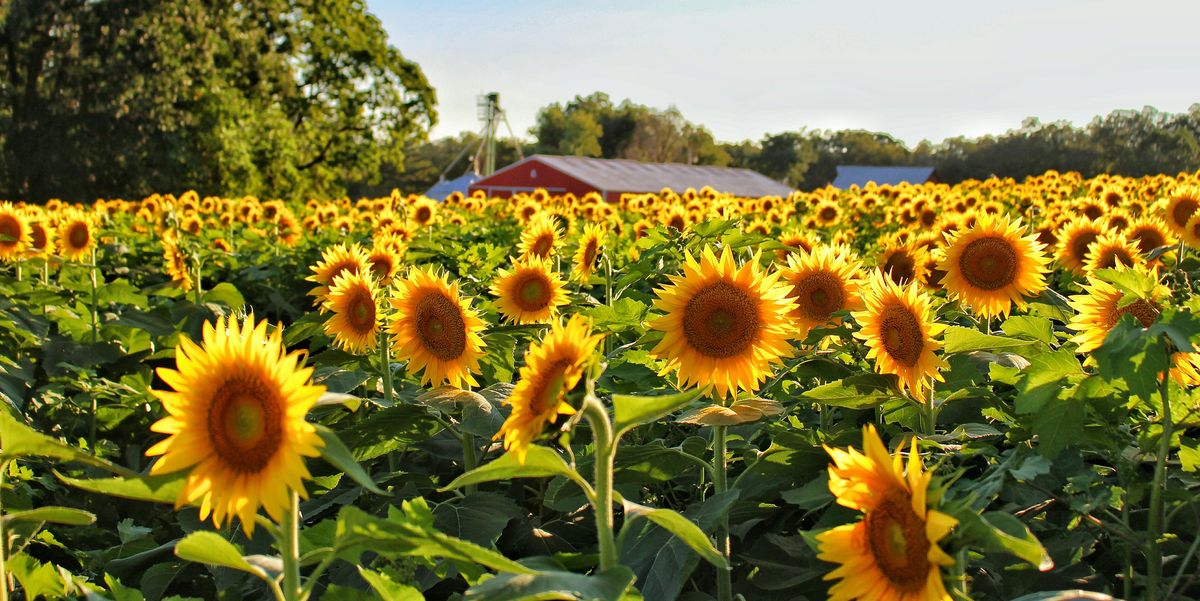Home>Gardening News and Trends>Latest News>Why Does The Venus Flytrap Plant Trap Insects?
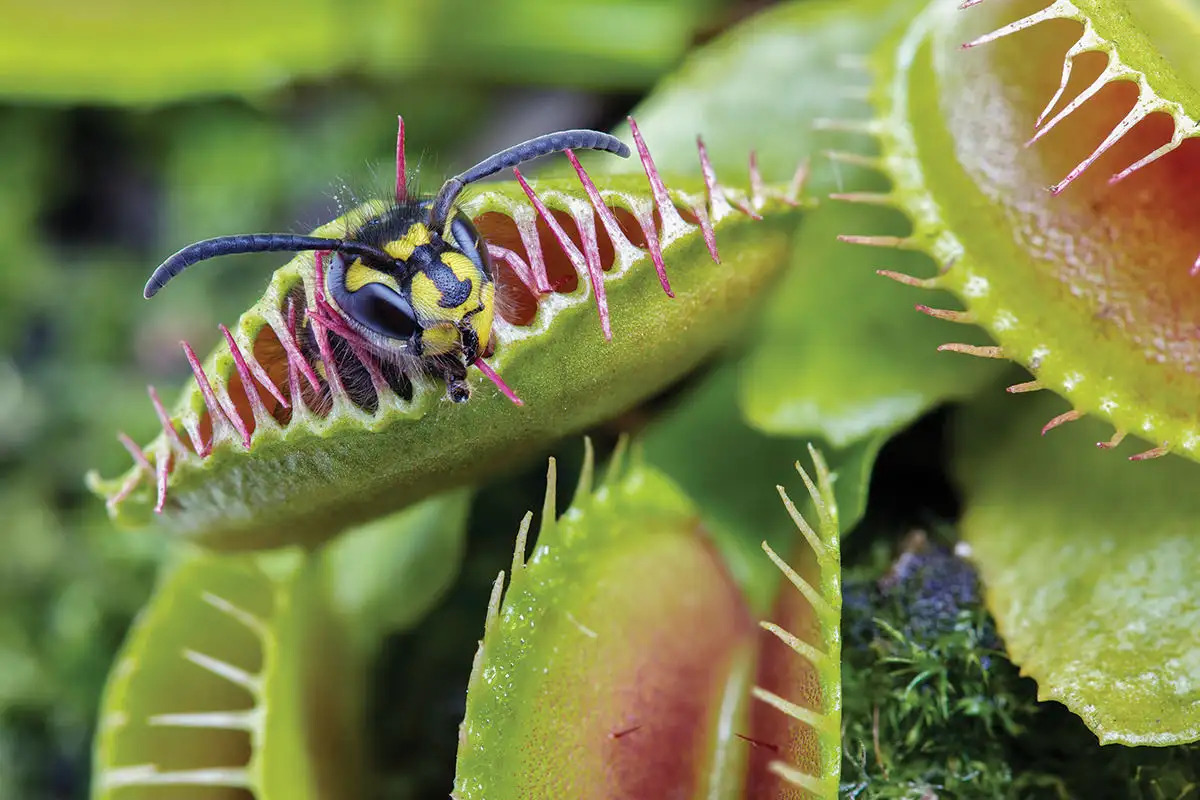

Latest News
Why Does The Venus Flytrap Plant Trap Insects?
Published: December 5, 2023
Stay updated with the Latest News on why the Venus Flytrap plant efficiently traps insects, with valuable insights and fascinating discoveries.
(Many of the links in this article redirect to a specific reviewed product. Your purchase of these products through affiliate links helps to generate commission for Chicagolandgardening.com, at no extra cost. Learn more)
Table of Contents
Introduction
The Venus Flytrap (Dionaea muscipula) is a fascinating plant species renowned for its unique ability to trap and digest small insects. This carnivorous plant has captivated the curiosity of scientists and nature enthusiasts alike, offering a remarkable example of nature’s ingenuity and complexity.
Native to the wetlands of North and South Carolina, the Venus Flytrap has become an iconic symbol of carnivorous plants. Its distinctive appearance, with its hinged traps and tooth-like structures, has earned it a well-deserved reputation as nature’s own “little shop of horrors.”
But what drives this plant to develop such extraordinary adaptations? Why do Venus Flytraps go to great lengths to catch insects as a source of nutrition? In this article, we will delve into the world of this extraordinary plant and explore the fascinating reasons behind its insect-trapping behavior.
By unraveling the mysteries of the Venus Flytrap’s mechanism, we can gain a deeper understanding of how plants can evolve to survive in harsh environments and harness alternative food sources.
So, join us on this journey as we dive into the captivating world of the Venus Flytrap plant and discover the secrets behind its carnivorous nature. Prepare to be amazed by the intricate mechanisms, stunning adaptations, and the evolutionary significance of this fascinating botanical wonder.
But first, let’s take a closer look at the anatomy of the Venus Flytrap plant and understand its unique structure and function.
Anatomy of the Venus Flytrap Plant
The Venus Flytrap possesses a specialized structure that allows it to capture and digest its prey. It consists of two main parts: the leaf blade and the trap mechanism.
The leaf blade of the Venus Flytrap is broad and flat, with a vibrant green color that aids in photosynthesis. Each leaf blade is divided into two main lobes, with several smaller lobes present along the edges. These lobes are lined with sensitive hairs called trigger hairs, which play a crucial role in detecting the presence of prey.
The trap mechanism is the most intriguing aspect of the Venus Flytrap’s anatomy. Located at the junction of the lobes, it consists of two halves, or jaws, that form a hinged structure. Each jaw contains teeth-like structures called cilia that interlock when the trap is closed.
When triggered, the trap snaps shut, trapping the unsuspecting insect within its grasp. The cilia on the inner surface of the jaws interlock, preventing any escape. The mechanism is so sensitive that it can distinguish between the movement caused by wind or falling debris and that of a potential meal.
The leaves of the Venus Flytrap also produce a sweet-smelling nectar, which lures insects closer to the trap. This nectar acts as a bait, enticing the prey to explore the leaf’s surface and come into contact with the trigger hairs.
Understanding the intricate anatomy of the Venus Flytrap is crucial in comprehending its carnivorous adaptations and the mechanism through which it captures insects. In the next section, we will explore the unique features of the Venus Flytrap that enable it to thrive on a diet of small prey.
Carnivorous Adaptations
The Venus Flytrap has evolved a range of remarkable adaptations to thrive as a carnivorous plant. These adaptations enable it to compensate for nutrient deficiencies in its natural habitat and supplement its diet with prey.
One of the key adaptations of the Venus Flytrap is its ability to produce digestive enzymes. The inner surface of the trap secretes digestive enzymes, such as proteases and phosphatases, which break down the insect’s proteins and other nutrients into a more easily absorbable form.
In addition to digestive enzymes, the Venus Flytrap also produces specialized glands that secrete mucus. This slimy substance serves multiple purposes: it helps to lubricate the trap and facilitate the movement of the insect towards the digestive enzymes, as well as preventing the escape of any potential prey.
The Venus Flytrap’s carnivorous adaptations also extend to its ability to close and open its traps. Unlike other plants that undergo slower movements, the Venus Flytrap has evolved a sophisticated mechanism that enables it to snap shut its trap rapidly. This rapid action ensures that the prey is captured before it has a chance to escape.
Furthermore, the Venus Flytrap has the ability to discern between living organisms and non-living stimuli that may trigger the trap. This discrimination allows the plant to conserve energy by avoiding unnecessary closure of its traps. Only when the sensitive trigger hairs are stimulated repeatedly does the trap close, indicating a potential meal.
This unique set of adaptations in the Venus Flytrap showcases nature’s ingenuity in providing solutions for survival. By capturing and digesting insects, the Venus Flytrap can obtain essential nutrients and minerals that are scarce in its natural habitat.
Now that we understand the carnivorous adaptations of the Venus Flytrap, let’s explore how the trap mechanism is triggered and the subsequent digestion process in the next sections.
Triggering Mechanism
The triggering mechanism of the Venus Flytrap is a fascinating process that ensures only living organisms are captured and digested by the plant. This mechanism involves the interaction of sensitive trigger hairs, electrical signals, and rapid movement.
Each trap of the Venus Flytrap is lined with trigger hairs, which protrude from the surface of the lobes. These trigger hairs serve as sensors that detect the presence of potential prey. When an insect comes into contact with the trigger hairs, it stimulates the plant and initiates the trapping process.
The Venus Flytrap has evolved a clever method to distinguish between incidental contact, such as raindrops or falling debris, and the deliberate movements of a potential meal. The trigger hairs need to be touched several times in a short period for the trap to be activated. This prevents the plant from wasting energy on false alarms and ensures efficient prey capture.
Once the trigger hairs are stimulated, an electrical signal is generated within the leaf’s cells. This electrical signal, similar to nerve impulses in animals, spreads throughout the leaf and ultimately leads to the closure of the trap.
The closure of the trap is a rapid process that occurs within milliseconds. The inner surface of the lobes contains motor cells that respond to the electrical signal by pumping ions into or out of the cells. This creates a cascade of osmotic pressure changes that cause the lobes to fold inward, trapping the insect.
The sensitivity of the Venus Flytrap’s trigger mechanism is an incredible example of the plant’s adaptations to its environment. Through this elaborate process, the plant ensures that only living organisms are captured and that it maximizes its chances of obtaining the necessary nutrients for survival.
Now that we understand how the Venus Flytrap captures its prey, let’s explore the next step in this intriguing phenomenon: the digestion process.
Digestion Process
Once the Venus Flytrap has successfully captured an insect, the digestion process begins. This remarkable plant has developed a unique way of breaking down and extracting nutrients from its prey.
First, as the trapped insect struggles, it brushes against the trigger hairs, further stimulating the closure of the trap. The interlocking cilia on the inner surface of the trap prevent the insect from escaping.
Once trapped, the Venus Flytrap begins to produce digestive enzymes. These enzymes are secreted onto the inner surface of the trap, where they start to break down the insect’s proteins and other nutrients. The digestive enzymes work to dissolve the insect’s soft tissues, gradually turning it into a nutrient-rich slurry.
The trapped insect is held within the closed trap for a period of time, typically around five to twelve days. Over this period, the Venus Flytrap gradually absorbs the nutrients from the dissolved insect. The nutrients are absorbed through the leaf’s inner surface, where they are distributed throughout the plant to support growth and reproduction.
After the digestion process is complete, the trap opens again, releasing any remaining exoskeleton or indigestible parts of the insect. Often, the Venus Flytrap will reset its traps and await its next potential meal.
The digestion process in the Venus Flytrap is an incredible adaptation that allows the plant to utilize alternative sources of nutrition. By capturing and digesting insects, the Venus Flytrap can survive in nutrient-poor habitats where other plants may struggle to thrive.
Now that we have covered the digestion process, let’s explore why the Venus Flytrap goes through all this trouble to acquire energy from insects and what it means for its overall survival and evolutionary significance.
Energy Acquisition from Insects
The Venus Flytrap’s unique ability to acquire energy from insects plays a crucial role in its survival and overall growth. While most plants obtain their energy through photosynthesis, the Venus Flytrap has evolved to supplement its nutritional needs through carnivory.
In its natural habitat, the soil in which the Venus Flytrap grows is often nutrient-poor. By capturing and digesting insects, the plant compensates for this deficiency and gains access to the vital nutrients it requires for growth and reproduction.
Insects provide the Venus Flytrap with essential macronutrients, such as nitrogen, phosphorus, and potassium, which are scarce in its environment. These nutrients are crucial for the plant’s metabolic processes and overall development.
In addition to fulfilling its nutritional requirements, the Venus Flytrap’s carnivorous behavior also offers a competitive advantage. In nutrient-poor habitats where other plants struggle, the ability to catch and digest insects provides the Venus Flytrap with a valuable alternative source of energy.
While the energy obtained from insects may not be the primary source for the plant, it supplements photosynthesis and allows the Venus Flytrap to thrive in environments where other plants may struggle to survive.
This unique adaptation of acquiring energy from insects demonstrates the incredible versatility and adaptability of nature. The Venus Flytrap has evolved an effective mechanism to capitalize on its environment and ensure its success in a challenging ecosystem.
Now that we have explored the energy acquisition from insects, let’s dive into the evolutionary significance of the Venus Flytrap’s carnivorous nature and its broader implications.
Evolutionary Significance
The carnivorous nature of the Venus Flytrap holds significant evolutionary significance, shedding light on the remarkable adaptations that can arise in response to environmental challenges.
One theory suggests that the Venus Flytrap’s carnivorous behavior evolved as a response to nutrient-poor environments. In these habitats, the plant’s ability to capture and digest insects provides a unique advantage for survival. Over time, those individuals with more efficient trapping mechanisms and digestion processes would have been favored by natural selection, leading to the development of the sophisticated Venus Flytrap we see today.
Furthermore, the Venus Flytrap’s carnivory serves as a powerful example of convergent evolution. Similar plant species, such as the sundews and pitcher plants, have also independently evolved carnivorous adaptations in different geographical locations. This convergence highlights the effectiveness of carnivory as a survival strategy in nutrient-poor habitats.
From an ecological perspective, the Venus Flytrap plays a vital role in its ecosystem. By preying on small insects, the plant contributes to the regulation of insect populations, which can impact the balance of other organisms in the community. Additionally, the Venus Flytrap provides a unique niche habitat for various microorganisms and invertebrates that are associated with its trapping mechanism.
From a broader perspective, the Venus Flytrap’s carnivorous nature captivates our imagination and raises intriguing questions about the potential limits of plant evolution. It challenges our assumptions about the boundaries between plants and animals and emphasizes the complex and dynamic nature of life on Earth.
Overall, the evolutionary significance of the Venus Flytrap lies not only in its survival strategy but also in the insights it provides into the diverse adaptations that plants can develop to overcome environmental obstacles. It serves as a testament to the incredible diversity and ingenuity of life on our planet.
Now that we have explored the evolutionary significance of the Venus Flytrap, let’s summarize the key insights we have gained from this exploration of its fascinating nature.
Conclusion
The Venus Flytrap, with its carnivorous nature and unique adaptations, is a botanical wonder that continues to captivate scientists and nature enthusiasts alike. From its intricate anatomy to its sophisticated trapping mechanism and digestion process, this plant showcases the incredible diversity and ingenuity of nature.
Through the evolution of carnivorous adaptations, the Venus Flytrap has found a way to thrive in nutrient-poor environments. By capturing and digesting insects, it supplements its nutritional needs and gains a competitive advantage over other plants in its habitat.
The triggering mechanism of the Venus Flytrap, involving sensitive trigger hairs, electrical signals, and rapid movement, ensures that only living organisms are captured, minimizing wasted energy. The digestion process, with its production of enzymes and absorption of nutrients, showcases the plant’s ability to extract energy from alternative sources.
The carnivorous behavior of the Venus Flytrap holds both ecological and evolutionary significance. It aids in insect population control and provides a unique habitat for associated microorganisms and invertebrates. Additionally, it serves as an intriguing example of convergent evolution and challenges our understanding of the boundaries between plant and animal.
The Venus Flytrap reminds us of the incredible adaptability and ingenuity of life on Earth. Its existence raises profound questions about the limits of plant evolution and offers a glimpse into the diverse strategies that organisms can develop to overcome environmental challenges.
In conclusion, the Venus Flytrap stands as a testament to the wonders of nature, highlighting the intricate relationships between organisms and their environment. Its carnivorous adaptations serve as a reminder of the endless possibilities that arise from the forces of evolution and the complex web of life that surrounds us.


